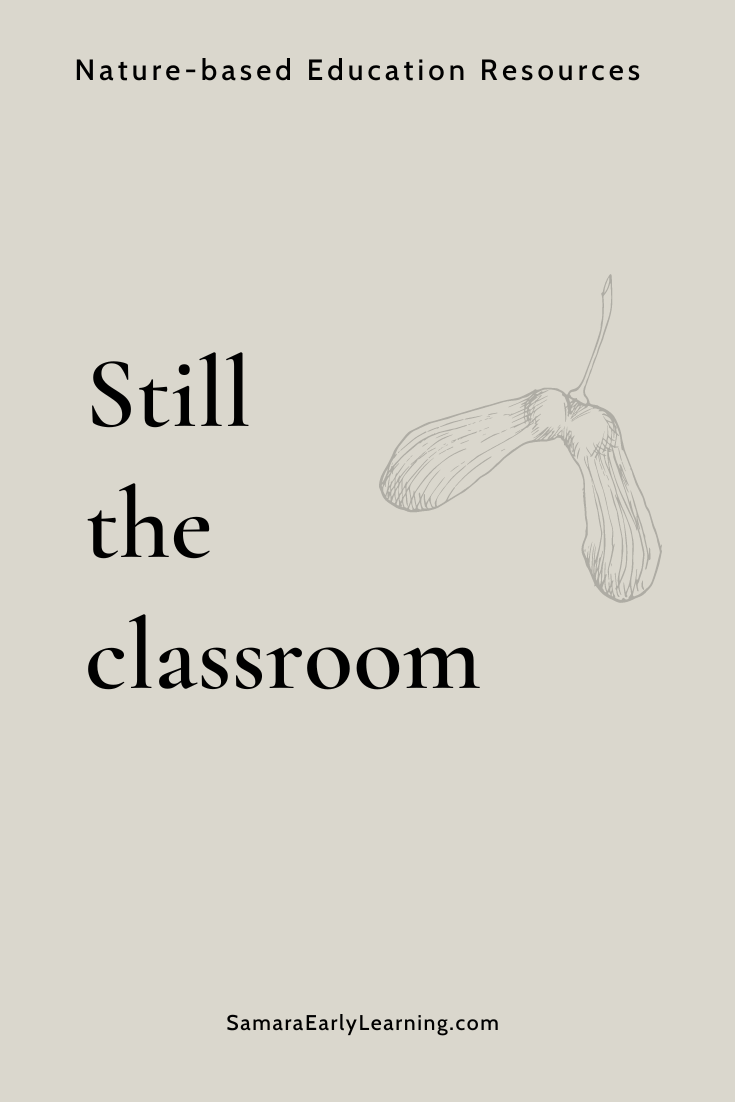Still the classroom
This post originally appeared in Dr. Rachel A. Larimore’s weekly Samara newsletter on August 15, 2023. If you’re interested in receiving these emails, scroll to the bottom of this page to subscribe.
Last week I discussed the Inside classroom and this week I’d like to share a bit about the Outside classroom.
Notice I called it Outside classroom–the outdoor play area is still a classroom! The goal is to move towards the outdoors being an extension of the Inside classroom. This doesn’t mean doing the exact same activities, but rather it means we engage with children in the same holistic ways Outside as Inside. In other words, time in the outdoor play area is not recess where teachers stand back and disengage from children’s play.
To achieve this, a starting point is to move away from elaborate constructed climbing structures which focus on primarily physical play to natural play areas which allow for a wide range of play.
In natural play areas the play will also change as the seasons change. In contrast to a climbing structure where the play is the same no matter what time of year.
Just like we do indoors, we should be intentional about providing an environment that supports different types of play and in a variety of developmental domains. That’s why it’s helpful to ask…
In what ways does the natural play area serve as an extension of the classroom?
When you’re thinking about this question, consider what play opportunities are available for children in these areas that are typical when indoors:
Literacy
Math
Science
Art
Blocks
Sensory
Toys/games
Dramatic play
Keep in mind the play opportunities don’t have to look the same as indoors. For example, the children might have wooden blocks indoors, but outdoors they can build with PVC pipes and straw bales.
Another way to think about the use of the natural play area is to examine what opportunities exist for different kinds of play:
Large-motor play
Small-motor play
Mastery play
Rules-based play
Construction play
Make-believe play
Symbolic play
Language play
Playing with the arts
Sensory play
Risky play
To support the different developmental domains and types of play we can provide a variety of materials. These include fixed features like a stage or cabin, as well as loose parts–open-ended materials children can use in a variety of ways. Ideally, we’ll provide a mix of both natural and manufactured materials to maximize children’s play opportunities.
I encourage you to take these lists outside and notice how many opportunities children have for the different types of play and domain-based experiences. Are there multiple opportunities? If not, what equipment or materials might you add to the space?
By considering the type of play opportunities available, we can shift toward the outdoor play space truly serving as an extension of the classroom where teachers are as engaged in supporting children’s play as they are indoors.
Keep changing lives,
Rachel
Rachel A. Larimore, Ph.D., Chief Visionary of Samara Learning

